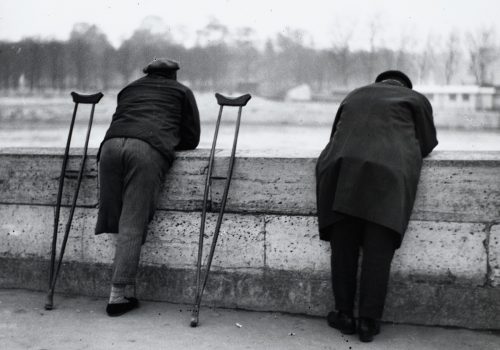An exhibition at the Centre Pompidou in Paris shows the committed photographers of the 30s: Eli Lotar, Pierre Jamet, Gisele Freund … How photography is a “class weapon” and how it has testified about a unhappy society, in full crisis, with all the hints of fascism.
They pose proudly, inflating their torsos and putting themselves on stage to defend their vision of things. The members of the October Group, a working theater troupe, displaying copies of the special issue of Communiste!, a magazine published then. Photograph of an anonymous person exposed at the beginning of the exhibition shows the effervescence there was around the political scene in those years, in the middle of the 1930s. Very quickly, we are transported in this period where the danger is great and where the mobilizations are numerous.
Thus illustrated magazines were published, their photographers engaged and concerned by the social upheavals which touched Europe then. Regards, for example, a magazine that celebrated workers, farmers and denounced the unprecedented rise of fascism.
Trash cans
Germaine Krull photographs a man reading L’Humanité in a cafe. Next to it, a group of men are busy making the portrait of a statue: they are the members of the Photographic Workers’ Association photographed by Eli Lotar. Very quickly, the photographers of this time engaged in the social struggles to fight against misery. They testify of the shocking scenes, they came upon in the streets. Marcel Arthaud shows us the distribution of the midnight soup in Les Halles by the Salvation Army. André Papillon makes the portrait of a family searching in the garbage cans in Paris. Staggering scene, too, of this woman gleaning food in the waste of a market, signed Marcel Delius. Jacques-André Boiffard photographs a damaged shoe and a foot that is supposed to be that of a tramp.
Countryside party
But they do not just denounce misery. They emphasize the small trades of the people and honor them. For example, André Kertész painted a portrait of a butcher in Les Halles in 1927. The man poses in front of carcasses of meat, the knives in his belt, over a large apron , he has sharp, piercing eyes. It is the beginning of a “humanistic photography” that Doisneau, Brassaï, Henri Cartier-Bresson will soon engage in. The latter, moreover, takes in photography the “worker’s eden”. It shows a scene that was then common: people relaxing on the banks of the Seine during the weekend when France was about to adopt paid holidays (1936). It is the fantasy of a simple pleasure, the countryside, the edges of the Marne … Not far from there, however, images give to see behind the scenes: the difficulty of the working conditions. Reportages in Belgium on the mining industry in the Borinage reveal all the darkness of these destinies.
Creeping fascism
people struggling to gain entitlement and autonomy. One section of the exhibition focuses on the mobilizations. Eli Lotar, for example, photographs a demonstration at the Porte de Bagnolet in 1934. They are gigantic signs brandished by a feverish and discontented crowd. Willy Ronis, shows a woman shouting something to her colleagues during a speech at the Citroën-Javel factories in 1938. Gisèle Freund pictured André Malraux’s closed and firm fist, defending the world of culture in 1935. Next to it, a photograph of Pierre Boucher shows a child holding a French flag, a dark, upset look on his face. Does he feel the threat that weighs on the world? In a few years, Hitler will invade the country and the freedom that characterized the work of these committed photographers will be over. They did everything to denounce the rampant fascism and especially during the Spanish war. Like the one of Henri Cartier-Bresson where children play among the ruins in Seville. Direct and profound testimony of the first victims of this global conflict which is on the horizon.
Jean-Baptiste Gauvin
Photographie, arme de classe
Nov. 7, 2018 – Feb. 4 2019
Galerie de photographies
Centre Pompidou
Place Georges Pompidou
75004 Paris
















